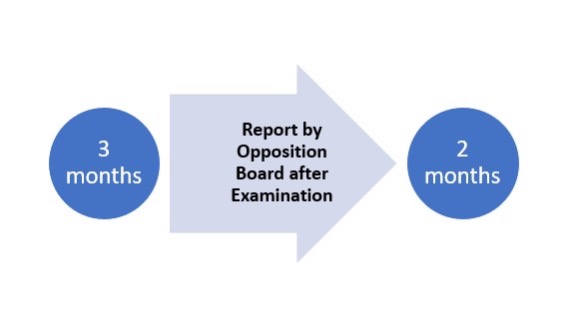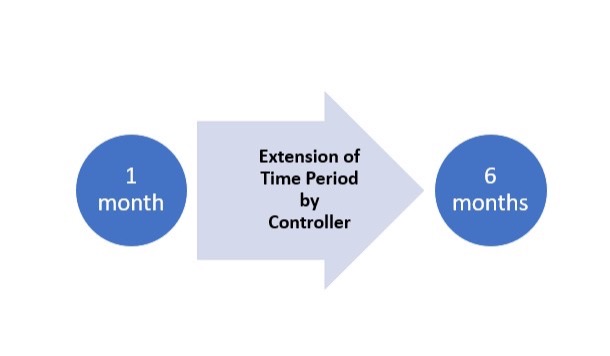
On August 23, the Draft Patent (Amendment) Rules, 2023, were published in the Gazette of India, inviting public comments by September 22. Since then, the Rules have been extensively discussed within the IP community, especially the potential impact they may have on the patent opposition mechanism. While we are working on a separate post, with comments on the different aspects of these suggested amendments, we are pleased to bring to you a post on the proposed changes to the prescribed timeline for the examination of a patent application. The post is authored by an extremely diligent SpicyIP intern Md. Sabeeh Ahmad, with inputs from Praharsh. Md Sabeeh Ahmad is a final year law student at the Aligarh Muslim University, Aligarh.
The Times They Are a-Changin’? A Look at the Revised Patent Prosecution Timelines in the Draft Patent Amendment Rules
Md. Sabeeh Ahmad
The Department for Promotion of Industry and Internal Trade, Ministry of Commerce has released the Draft Patents (Amendment) Rules, 2023 (“Draft Rules”) suggesting some key changes in the Patent Rules, 2003 (“2003 Rules”). The Draft Rules suggest amendments that may lead to a reduction in the timeline of the patent examination process. In this post, I shall discuss these suggested changes in comparison with the existing 2003 Rules.
Statement and Undertaking Regarding Foreign Applications

The first suggested amendment on revised timelines pertains to foreign applications. Rule 12 sub-rule (2) of the 2003 Rules requires an applicant to disclose particulars (statement and undertaking) of a patent application of the same or substantially the same invention in a foreign country within six months of filing the patent application. This is now sought to be amended to two months from the date of issuance of the first statement of objections. The Draft Rules also substitute sub-rule (3) to direct the applicant to furnish a fresh statement and undertaking (Form 3) within two months from the date of such communication by the Controller, which can be condoned by the Controller upon making a request under Form 4. As per Rule 12 (3) of the 2003 Rules, the Applicant is required to furnish information related to the objections regarding the novelty and patentability of the invention along with other information as required by the Controller within 6 months from the date of such communication.
Examination of Applications

Rule 24B of the 2003 Rules prescribes the process for “Examination of an Application”. Under the present 2003 Rules, the applicant is required to make a request for examination in Form 18 within 48 months from the date of filing of an application for patent or from the date of priority. The Draft Rules now seek to amend and reduce this requirement to 31 months from the date of filing of an application for patent or from the date of priority. In fact, Rule 24B now in its entirety replaces 48 months within Rule 24B (1) with a period of 31 months.
Oppositions

Another key change regarding timeline is proposed to occur in Rule 55 (“Opposition to Patent”). In addition to the insertion of a qualification requiring the representation filed by the Opponent to be first held as maintainable by the Controller in Rule 55 sub-rule (3), the Draft Rules seeks to amend sub-rule (4) wherein the time given to an applicant to file a statement and evidence against the opposition is reduced from 3 months to 2 months.

The Draft Rules also insert Rule 55 sub-rule (6) which reads as “After considering the representation and submission made during the hearing if so requested, the Controller shall proceed to either reject the representation and granting the patent or accepting the representation and refusing the grant of patent on that application, ordinarily within 3 months from completion of above proceedings.” This insertion thus now also fixes a timeline of 3 months (after completion of proceedings of hearing) for the Controller in an opposition to wind up proceedings and either reject or grant patent. Interestingly, this seems to conflict with the sub-rule (5) which states that after considering the statement and evidence by the applicant, the representation of the opponent and after the hearing the parties, the Controller may accept or reject the patent or direct for amendment of the specification within 1 month from the proceedings. It’s unclear why instead of amending sub-rule (5), there was an addition of an extra sub-rule (6) essentially prescribing the same process. Was it to clarify that after the speaking order under sub-rule (5) the Controller is supposed to pass another order effectively making the same assessment, after 3 months from the proceedings? If so, then there is another confusion if this period will include the 1 month period under sub-rule (5) to pass a speaking order after the hearing or will the 3 months period commence after the speaking order has been passed by the Controller under sub-rule (5)?
Report of the Opposition Board

After a Notice of post grant Opposition is given by an Opponent, the Controller is required to constitute an Opposition Board (under Rule 56), which then examines the Notice of Opposition and documents (Refer to Rule 57-60) filed by the Opponent as well as the Patentee. The Opposition Board is required to submit a detailed report after their examination within a period of 3 months from the date when these documents are forwarded to it. The Draft Rules reduces this examination time period by the Board of Opposition to 2 months.
Submission of Form 27

Section 146 of the Patents Act warrants a patentee or its licensee to furnish a statement (Form 27) showcasing the working of their patent in India. The 2003 rules mandate that the Form should be furnished once in respect of every financial year, starting from the financial year immediately after the financial year of the grant of the patent. However, the Draft Rules seek to amend this requirement under sub-rule (2) and mandate the patentees and licensees to furnish Form 27 once every 3 years. Further, it inserts a proviso stating that the Controller can condone the delay upon a request filed under Form 4.
Extension of the Deadlines

Rule 138 of the 2003 Rules gave powers to the Controller to extend the time period of specified timeframes as mentioned in sub-rule (1) of Rule 138 by a period of one month. The Draft Rules deletes these specified timeframes in sub-rule (1) and grants the Controller power to extend the time period by six months for any proceeding or act whose time is specified under the 2003 Rules. The sub-rule (2) of Rule 138 clarifies that any request for extension has to be made in Form 4 before the expiry of the period of 6 months as mentioned in sub-rule (1).
Conclusion
The new timeline proposed in the Draft Rules seems to be a recourse taken to expedite the entire patent prosecution process, which is plagued by delays, while also factoring in concerns that a party may have by accommodating a universal, longer extension period of 6 months for all the proceedings. Readers will recall that in August, 2022 The Economic Advisory Council to the Prime Minister (EAC-PM) came out with a report titled “Why India Needs to Urgently Invest in its Patent Ecosystem?” (covered here by Praharsh). The report zeroed in on three major reasons for the delay in the patent prosecution process in India. First, the lack of manpower; second, the absence of a fixed timeline and third, cumbersome compliance requirements (information related to foreign patent applications).
Apart from paying heed to the recommendation for fixing time limits on the process, the Draft Rules also defer to the suggestions in the EAC Report for other substantive amendments as well. For instance, the report suggested doing away with the requirement of furnishing information about foreign patent applications since it was no longer required for Patent Cooperation Treaty (PCT) applications as there are tools made available by WIPO, called WIPO CASE (Centralized Access to Search and Examination) which provide consolidated information for such applications related to the status of patent applications and related details in a large number of jurisdictions and India is already a part of this initiative. The Draft Rules under clause 2, seem to agree on the intent behind this suggestion and dilute the existing obligations regarding foreign patent applications. This is evident from limiting the filing of information about applications filed abroad only in cases when objections are instituted against such applications. Even the “maintainability” insertion in Rule 55 seems to be aimed at tackling frivolous oppositions as suggested by the EAC-PM in its Report.
